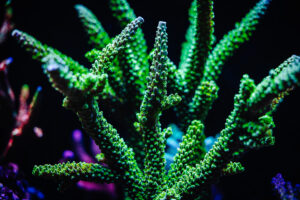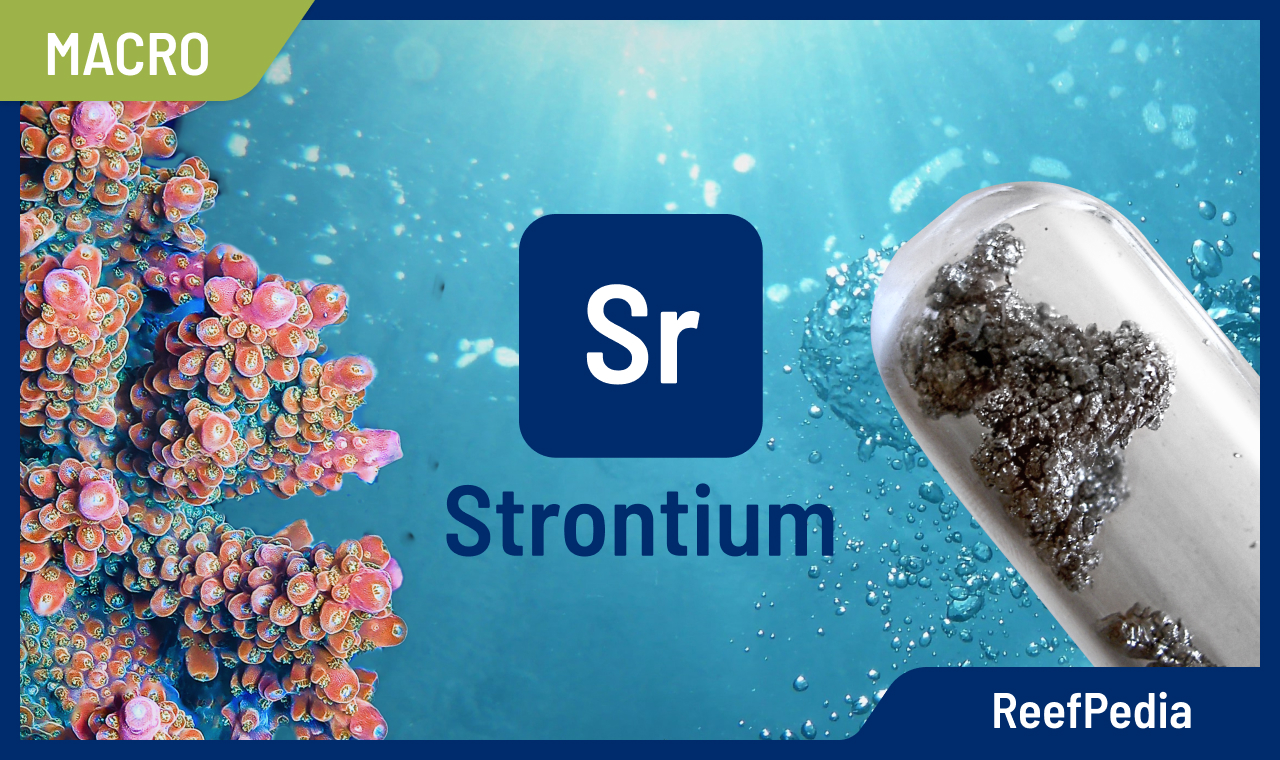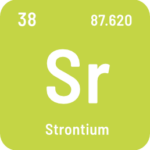 What is STRONTIUM (Sr)?
What is STRONTIUM (Sr)?
Strontium (Sr, Latin strontium) – a chemical element from group 2 of the periodic table of elements, the so-called Beryllites*. It’s a soft, ductile and malleable silvery-gray metal. Chemically it’s similar to calcium. Many animals use it to build their skeletons. Free strontium does not occur in nature, it is present mainly in the form of calcium minerals, e.g. aragonite, and in the form of other minerals, e.g. strontianites and celestines.
Strontium occurs in seawater and belongs to the group of macroelements, its optimal content should be around 8-12 ppm.
The importance of strontium in seawater
Strontium is one of the macronutrients in seawater, which is very important for the proper growth of corals, it works similarly to calcium. Many marine animals use it to build their skeletons. It accelerates the growth of corals, calcareous algae and other organisms, including molluscs.
Corals use strontium to cover the skeleton to regulate growth in certain areas. Strontium inclusions in the coral skeleton are important for its structure, they lead to a more stable and hard skeleton and a natural growth pattern with metallic shiny tissue. The inclusion of strontium in the coral skeleton is therefore no accident.
Strontium occurs naturally in the form of the mineral aragonite. This mineral provides essential materials for marine life and also maintains the pH of the water close to its natural level to prevent biogenic calcium carbonate from dissolving. Strontium is used in a similar way to calcium and is essential for proper coral growth.
 Numerous studies confirm the importance of strontium in the skeleton building process in corals such as Acropora. Scientific studies indicate that the observed changes in strontium may reflect changes in the rate of skeletal calcification.
Numerous studies confirm the importance of strontium in the skeleton building process in corals such as Acropora. Scientific studies indicate that the observed changes in strontium may reflect changes in the rate of skeletal calcification.
There is also evidence of “species effects”, apparently unrelated to differences in growth rate, as in Acroporas. Some types of corals are constantly depleted or enriched in strontium content in the skeleton relative to other types of corals living in the same reef environments and environmental conditions. There are also known cases of differences in the content of strontium in the skeleton due to a genetic effect, such as in Scleractinians.
Strontium has a second important function that is related to the defence against parasites in the coral tissue. In combination with other elements and trace elements, strontium strengthens the immune system. Therefore, it is important for coral health that the concentration of strontium is correct.
Other aspects of the importance of strontium in seawater are also known. Its presence enhances, for example, the clarity of the blue color in corals. In addition, the appropriate level of strontium positively affects the growth of calcareous algae.
Problems associated with an excess or deficiency of strontium in seawater
Low concentrations of strontium lead to loss of color and stunted growth of animals, especially coral algae and stony corals. It can also cause corals to become more sensitive to parasites.
Conversely, high concentrations of strontium can lead to coral health problems and strontium carbonate precipitates (sediment).
How to protect the aquarium?
Strontium content should be checked regularly and maintained at the correct level. We suggest keeping strontium at 8 – 12 mg/l, and the optimal value we recommend is 10 mg/L. Such a level of strontium in seawater ensures the animals’ health and beautiful coloration.
The most accurate and reliable method of strontium determination is ICP-OES analysis – the technique of atomic emission spectrometry with excitation in induced plasma (Inductively Coupled Plasma Optical Emission Spectrometry).
Indicators of abnormal strontium levels in a marine aquarium
Deficiency:
- pale colors, especially loss of blue color
- poor growth
- the skeleton becomes softer
Excess:
- strontium reacts as an alkaline earth metal with carbonates to form sparingly soluble strontium carbonate (visible sediment in the aquarium)
Recommendations
To ensure adequate strontium levels in your aquarium, you should regularly test the water.
If the strontium level is above 12 mg/l, we’re dealing with an overdose. Too high a level of this element leads to the precipitation of sparingly soluble carbonates (SrCO3).
The most common reasons for exceeding the recommended level of strontium: too high doses of administered liquids (check the dosing parameters on the dosing pumps) and incorrectly prepared salt. Find and eliminate the cause of the problem and lower the value of this parameter in the water. Perform up to 6 water changes. It is recommended that, at each water change, approximately 15% of the aquarium water volume should be replaced, until the recommended value of this parameter is reached. Water prepared for replacement must be characterized by an appropriate level of target salinity. Use salt with the correct parameters and composition for the ICP test.
If the level of strontium is below 8 mg/l, we recommend using products containing this element to compensate for the level. To ensure a constant level of strontium in a marine aquarium, we recommend systematic supplementation of this element depending on the coral stock in your aquarium.
*The name Beryllites comes from the name of the first element placed at the top of the second column of the periodic table (Be-beryllium).
About author

Magdalena Metzler
Privately, I am a mother and a lover of nature and sport. My main interest is quantum chemistry, which hides a whole lot of unsolved mysteries and connections, which is extremely exciting from a scientific point of view.
In my scientific career, I have conducted international projects focused on innovative solutions for many branches of business, e.g. automotive, construction, and now, of course, marine aquaristics.
Working at Reef Factory gave me a passion for marine aquaristics, which I can develop every day, building a chemistry department and creating products that will help aquarists take care of tanks and ensure the highest safety of animals.
One of the most exciting memories of working at Reef Factory is the commissioning of the ICP-OES spectrometer, which analyzes the elemental composition of seawater. The method of analysis in ICP is based on an analytical technique, which is a combination of my passion for quantum chemistry and marine aquaristics.
I hope you find my articles on ReefPedia interesting and helpful! Happy reading :))
Magda


 What is STRONTIUM (Sr)?
What is STRONTIUM (Sr)?